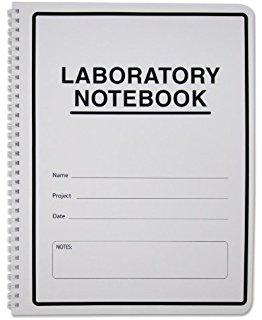
A primer on lab notebooks
© 2003, Dawsey Co., LPA
April 2003
The importance of laboratory notebooks cannot be overstated. Lab notebooks create the “trail of evidence” that is essential in protecting valuable intellectual property. The information contained in lab notebooks is often the best record as to when an invention was conceived and reduced to practice. As such, there are a few simple rules to follow in creating a bulletproof lab notebook.
1. Use Bound Notebooks
Inventors should use notebooks with glue or spiral bindings. If loose sheets such as computer printouts or photos must be used, then make sure that they are consecutively numbered and individually dated, signed, and witnessed.
2. Use Ink
Use ink when creating notebook entries. Additionally, do not white out or erase entries. If an error occurs, simply strike a single line through the error.
3. Minimize Blank Space
Minimize the amount of blank space in the notebook. Draw a line through any blank areas to prevent subsequent entries. It is important to establish that the entries are made in chronological order.
4. Sign & Date Each Entry
Sign and date the inside cover of each notebook to indicate the date of first use. Additionally, inventors should number their notebooks consecutively for each year. Most importantly, sign and date each entry.
5. Have An INDEPENDENT Witness Sign & Date Each Entry
Have an independent witness sign and date each entry soon after it is made. Entries should never be witnessed less frequently than a weekly or monthly basis. An independent witness is one who would not be named as a co-inventor of the invention, but understands the technology entered in the notebook. The witness line may be as simple as “read and understood by (name) on (date).”
6. Don’t Change Entries
Do not modify entries at a later date. If data was inadvertently omitted simply enter the new data in sequence on the current date and cross-reference the prior entry. It is good practice to record data when the experiments are performed.
7. Use Past Tense
The past tense should be used in describing experiments that have been performed.
8. Permanently Affix Attachments
Permanently affix attachments such as graphs or computer printouts in the notebook, preferably by stapling. Draw lead lines from the paper onto the surface of the photograph to show that the photographs were not substituted at a later date. Sign and date the attachment independently from the entry. Whenever possible, draw sketches, in ink, directly on the notebook page, rather than attaching separate drawings.
9. Use Legends
Use legends to explain unique abbreviations and symbols that are not common in the field.
10. Never Remove Originals From A Notebook
All lab notebooks, whether still in use or ten years old, should contain all the original pages.
11. Outline Experiments
Upon that start of a new project or experiment, take the time to outline the objective.
12. Record Lab Meeting Minutes
Record all discussions relevant to an experiment in the notebook, including suggestions made by others. Carefully document all suggestions made by others. Notebooks are often essential in determining inventorship issues.
13. Detail, Detail, Detail!
Include as much detail in notebook entries as possible. Record all experiment conditions. All statements regarding the experiment should be supported by factual data. Avoid giving opinions or speculation in the notebook.
14. Save Old Notebooks
Index all lab notebooks. Notebooks are frequently indexed by project, by number, and by author. Notebooks that contain information related to inventions for which a patent application has been prepared should be kept with the corresponding patent application. As such, they should be retained for the life of the patent plus six years. Old notebooks not associated with a patent application should be kept together in a central location. Keep in mind that your lab notebooks are the property of your employer and are not your personal property. After all, notebooks may have tremendous value to your employer long after you have left.
15. Track Old Notebooks
Notebooks should be catalogued and tracked. Depending on the size of the organization, this may be accomplished at the company, division, or lab level. Many research oriented organizations record the date a researcher receives a notebook and the date the notebook is returned for cataloguing. Then, after cataloguing, the notebooks may only be checked out by authorized personnel.
While these steps may seem inconvenient at first, one must keep in mind that value of an organization’s intellectual property often far exceeds the value of the tangible assets.
